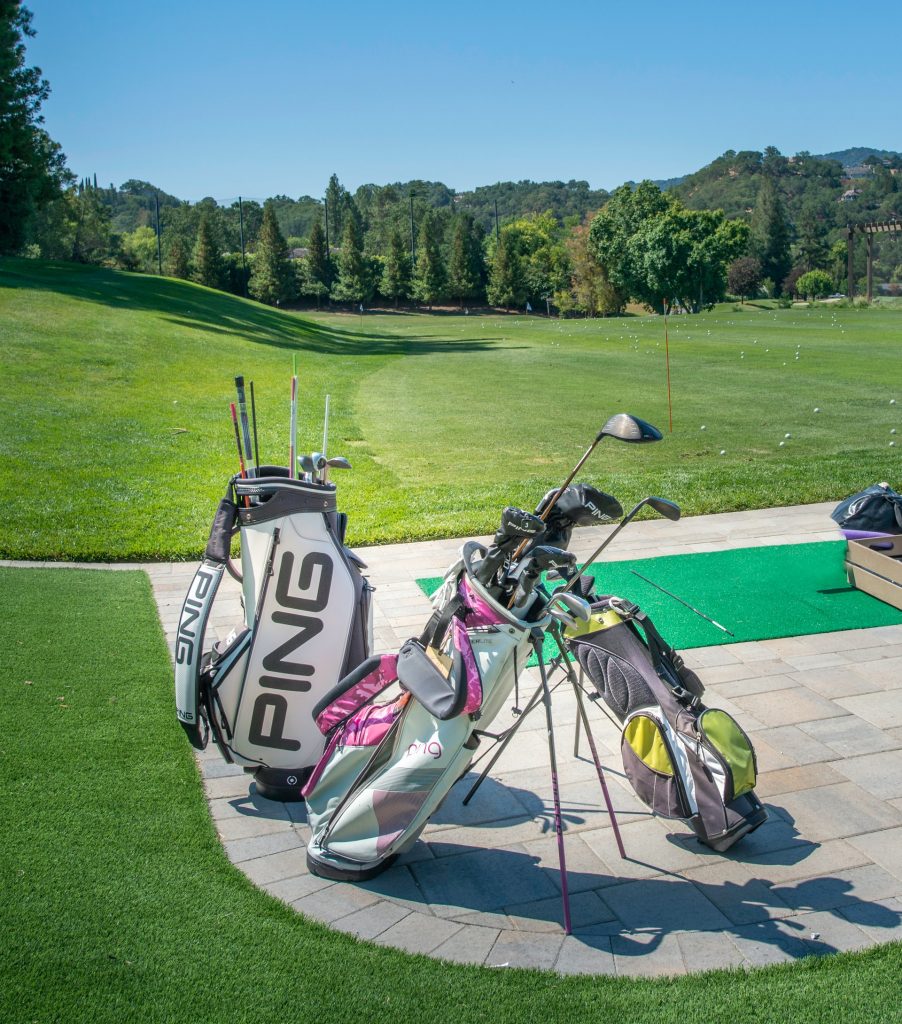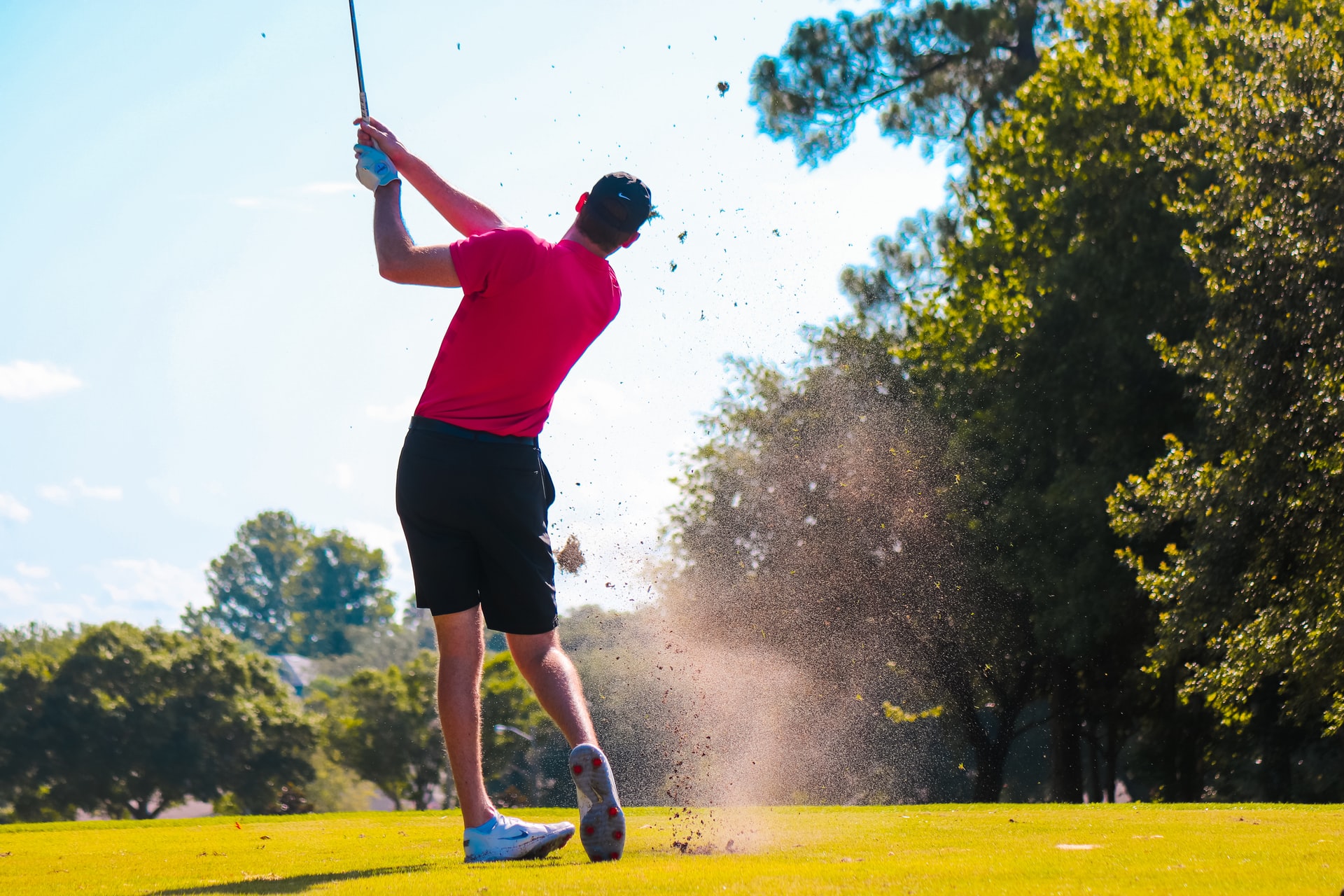
Golf is thrilling and frustrating. Many desperately search the internet, meet with coaches, and buy expensive equipment in hopes of shaving just a few strokes off their score. Oftentimes these efforts feel in vain, but after investing in a number of these attempts, you might realize what Gary Player did: “The more you practice, the luckier you get.”
Goal Setting at the Driving Range
The key to building a better driving range practice plan is goal setting. If you don’t know where you want to be, how will you create a plan to get there? Practicing without a goal in mind can be a huge waste of time if you never stretch yourself to your limits and consistently watch how close you’re getting to your desired mark.
But how to set a good golf goal? Try making a PACT goal.
Pact goals are:
P – Purposeful
A – Actionable
C – Continuous
T – Trackable
The best goals are backed by a purpose. Why do you play golf? Is it for fun? For your mental health? Get to the root of why you play, and more importantly why you want to improve. Let this be your engine that propels you forward even when you’re tired or discouraged.
Good goals are actionable. If your goal is to play the Masters Tournament by next year, is there enough time to acquire the skills you need if you just started golfing last month? Probably not. Make sure you’re being realistic and creating goals that you can act on right now.
Continue to pursue your goal. Be ambitious. If your goal is to play the Masters, create a map for yourself with smaller goals to get you there. This will ensure continuity and consistency in your practice.
Try and make your goals trackable, or quantifiable. For example, breaking 100 on the course. If your goal is to have 100 good hits on a given day at the range, define what qualifies as a good hit. Then, track how many ‘good’ hits you were able to complete. Doing so will allow you to track your progress more easily.
Create Your Driving Range Playbook
Everyone needs a concrete driving range playbook. Find drills that you like, and get really good at them. Try some new ones. What matters is that you are consistent. Here are a few of our favorites:
Get Your Groove On
Yep we said it. Listen to music on the driving range (with earbuds of course). Studies show that your body actually responds in rhythm to the music you’re listening to. Try and listen to songs that don’t go much faster or slower than 100 bpm. This is the optimal tempo for your golf swing.
1. Towel Under Arm Golf Drill
- Grab an extra towel from your bag
- Place it under your rear arm(right arm for right handed hitters
- Hit the ball like normal without letting the glove drop
- Repeat
This drill reinforces connectivity between your lower and upper body. If your arms veer too far outside of the optimal triangle shape, you’ll wind up on top of the ball and slice it.
2. Worst Ball Drill (Tiger’s Favorite)
- Set up at the tee
- Drive two balls
- After looking at the two balls positions, choose the worst one
- Place the second ball next to the worst ball
- Hit both
- Repeat until you finish the hole
This is more of an on course drill, but reinforces the idea that focus is required for both easy and challenging shots.
3. Flex Turn Push Turn Golf Drill
- Stand shoulder width the part with a club across your shoulders.
- With the right side bend intact, rotate your shoulders as if doing a backswing
- Notice how your weight is being pressed to the ground
- Now rotate your shoulders forward as if you’re beginning your downsizing
- Focus on pushing through the ball
- Follow through with your feet
- Do 150-300 reps a day
Flexion is one of the most important parts of your golf swing. You want to feel like your body is being compressed as you progress from the backswing, to the downswing, and then to impact. This rotation drill works to create optimal per stroke power and efficiency.
4. Headcover Drill
- Grab an iron
- Place the headcover about a foot in front of your front leg
- Swing your club. If you’re hitting the cover you’re slicing
- Try for a more outward downswing so you don’t hit the headcover
Slicing is caused by cutting across and over the top of the ball. This drill is meant to correct your swing path by playing an obstacle in the way.
5. Full Circle Golf Drill
- Grab an iron and setup at the range
- Notice the flags(if they have any)
- Try a quarter swing, a half swing, a 3/4 swing, and a full swing, noting distance
- Repeat each time trying to increase distance per shot
- Try with different irons
So many amateurs ruin a stellar drive and fairway shot by overshooting a chip shot. Learning to hit with accuracy from any distance is one of the keys to becoming a really good golfer and will surely improve your score.
6. Shoot Straight Golf Drill
- Find some landmarks(trees, flags, whatever will do)
- Take 10 shots, trying to land them all between the obstacles
- Note how many you got out of 10
- Repeat and improve
Gears Golf Motion Capture Might Help
Sometimes practicing alone isn’t enough to take your game to the next level. Professional advice specific to your biomechanics can work wonders for your golf game.
Gears touts the most powerful, precise, golf swing motion capture system in the world and our users are frequently awestruck by the clarity and practicality of our analytics. With our system you can not only compare your motions with a pro’s, but you can enjoy a glorious 3D rendering of every angle and speed of your body movement so you know exactly where you should be improving. Want to try it out? We’d love to show you around!
Get On The Course!
Practice is important, but don’t forget to get on the course! Playing for score will really help you know which parts of your game are lacking, where you can improve your technique, and ultimately what kind of practice plan you’ll need.



